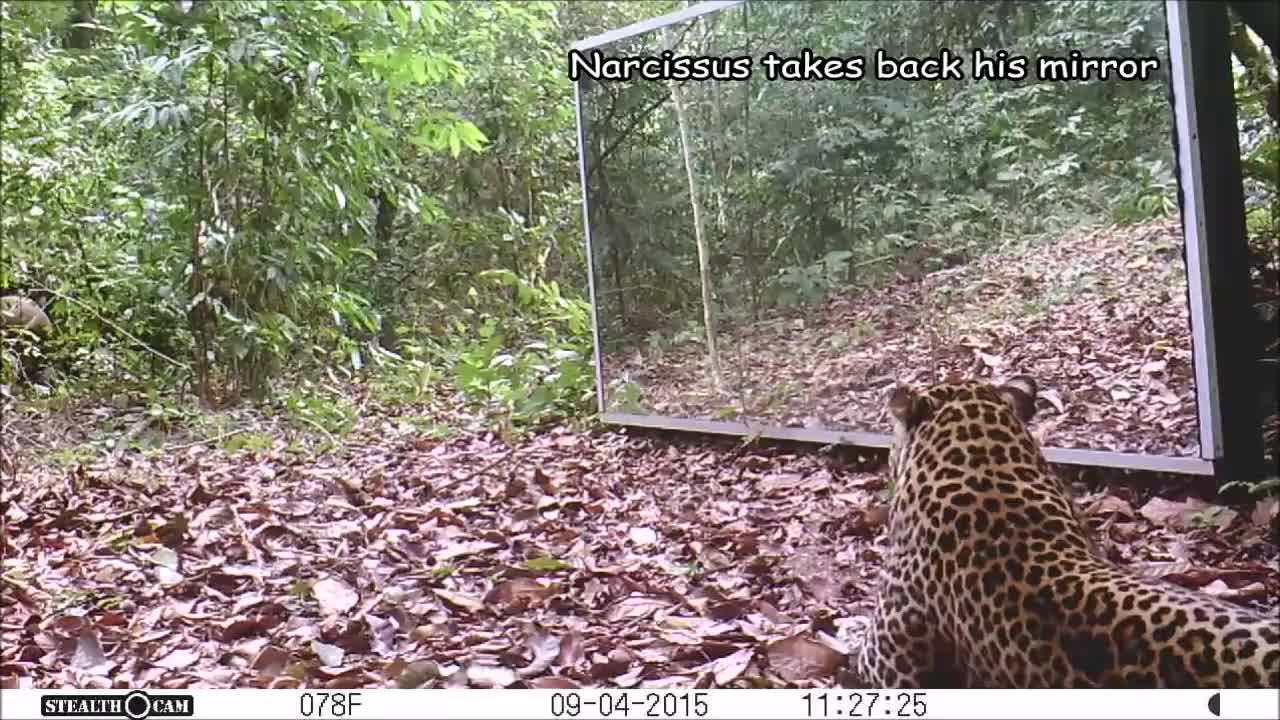Premium Only Content

Gabon' Jungle: An Elephants Family Refuses To Share A Big Mirror With A Leopard (Short Version)
Gabon' Jungle: An Elephants Family Refuses To Share A Big Mirror With A Leopard (Short Version). 𝗧𝗵𝗶𝘀 𝗶𝘀 𝗾𝘂𝗶𝘁𝗲 𝗻𝗮𝘁𝘂𝗿𝗮𝗹 𝗮𝘀 𝘁𝗵𝗲 𝗺𝗮𝘁𝗿𝗶𝗮𝗿𝗰𝗵 𝗮𝗻𝗱 𝗵𝗲𝗿 𝗼𝗹𝗱𝗲𝗿 𝗰𝗵𝗶𝗹𝗱𝗿𝗲𝗻 𝗵𝗮𝘃𝗲 𝘁𝗼 𝗽𝗿𝗼𝘁𝗲𝗰𝘁 𝘁𝗵𝗲 𝗵𝗲𝗿𝗱'𝘀 𝗯𝗮𝗯𝗶𝗲𝘀 𝗳𝗿𝗼𝗺 𝗮 𝗹𝗲𝗼𝗽𝗮𝗿𝗱, 𝘁𝗵𝗲𝗶𝗿 𝗺𝗮𝗶𝗻 𝗽𝗿𝗲𝗱𝗮𝘁𝗼𝗿 𝗮𝗳𝘁𝗲𝗿 𝗽𝗼𝗮𝗰𝗵𝗲𝗿𝘀.
𝗔𝘁𝘁𝗮𝗰𝗸 𝗶𝘀 𝘁𝗵𝗲 𝗯𝗲𝘀𝘁 𝗱𝗲𝗳𝗲𝗻𝗰𝗲! 𝗣𝗿𝗲𝘃𝗲𝗻𝘁𝗶𝗼𝗻 𝗶𝘀 𝗯𝗲𝘁𝘁𝗲𝗿 𝘁𝗵𝗮𝗻 𝗰𝘂𝗿𝗲!
In a remote area of the Gabonese forest, 12 km from the equator and 10 km from the Atlantic Ocean, outside a national park, Anne-Marie et Xavier Hubert-Brierre have been observing the reaction of wild animals as they catch sight of themselves in large mirrors (250cm x 120cm) with motion sensors camera traps the couple installed 9 years ago. This innovative idea attracted the attention of primatologists, behaviour specialists whose studies on self recognition have, until now, been carried out in laboratories, on wild animals in captivity who are accustomed to the presence of humans. Wild animals come and go as they please in front of our mirrors and stay as they like both day and night.
For humans self recognition is not immediate: in the case of the very young child a period of “mirror training” guided by the reassurance of the mother is necessary.
For wild animals who haven't had this mirror training, nor possess the use of language to guide and reassure their child, self recognition is much more difficult.
Let's take the example of a gorillas family: Adult males see their reflection as a stranger come to seize his females. Young animals, on the other hand, see their reflection as a friend and companion. They don't hesitate to touch the surface of the mirror or reach behind the mirror in an effort to touch the image. Rebekah, a young student of Professor Jim Anderson, of the University of Sterling in Scotland, concluded her researched, based on our videos of a young male gorilla in front of our mirrors by stating, “this gorilla has demonstrated the ability to recognise himself.” Translated by Robin Alcorn
-
 40:43
40:43
Kimberly Guilfoyle
3 hours agoDems Double Down on Delusion-Why? Live with Tony Kinnett & Bo French | Ep.202
9.33K7 -
 1:28:42
1:28:42
Redacted News
1 hour agoBREAKING! SOMETHING BIG IS HAPPENING IN EUROPE ALL OUT WAR IS COMING AGAINST RUSSIA, TRUMP FURIOUS
25.4K97 -
 47:50
47:50
Candace Show Podcast
2 hours agoBREAKING: Judge Makes Statement Regarding Taylor Swift's Text Messages. | Candace Ep 155
13.7K25 -

VSiNLive
1 hour agoFollow the Money with Mitch Moss & Pauly Howard | Hour 1
26 -
 1:05:32
1:05:32
In The Litter Box w/ Jewels & Catturd
1 day agoShalom Hamas | In the Litter Box w/ Jewels & Catturd – Ep. 756 – 3/6/2025
40.8K12 -
 1:23:00
1:23:00
Sean Unpaved
3 hours ago $1.56 earnedNFL Free Agency
12.5K2 -
 18:25
18:25
Stephen Gardner
2 hours ago🔥The REAL REASON the Epstein Files are being HIDDEN | I CONFRONT Alan Dershowitz for details!
17.2K56 -
 1:58:44
1:58:44
The Quartering
5 hours agoTrump To Charge USAID Staff, Campus RIOT Erupts, Theo Von & Candace Owens, Ukraine Gets Worse!
68.7K38 -
 1:08:42
1:08:42
Winston Marshall
5 hours ago“This Is a Ticking Timebomb!” Trump’s Unlikely Coalition & The Woke Right w/James Lindsay
20.8K6 -
 24:32
24:32
Rethinking the Dollar
5 hours agoWhy Washington Will NEVER Fix the Debt Crisis w/ Paul Stone
8.43K1